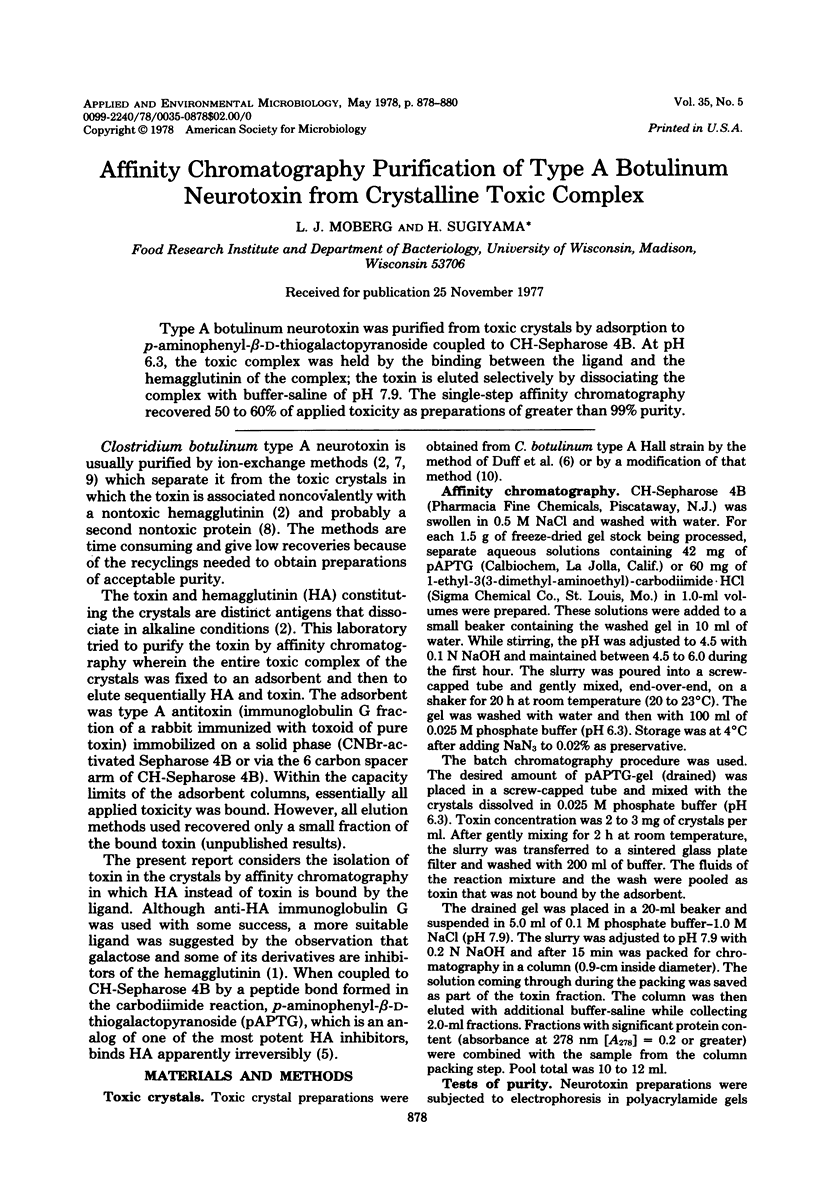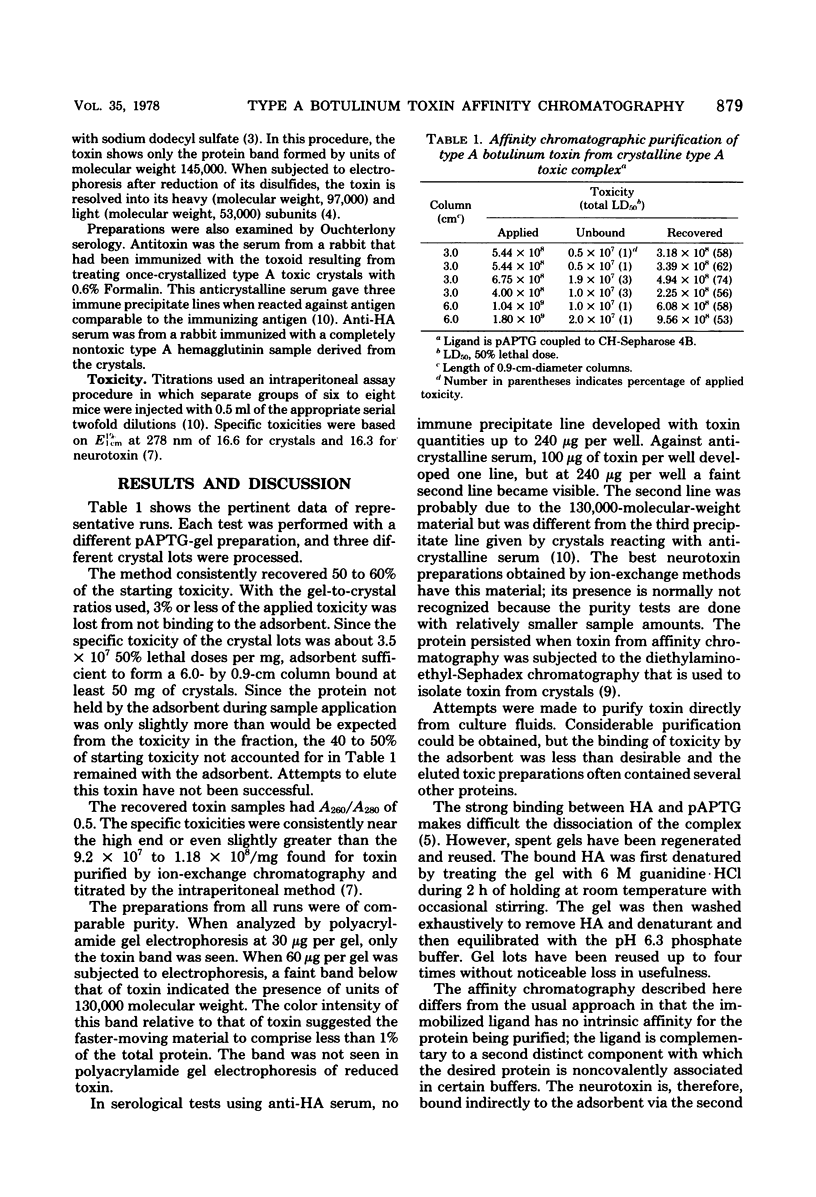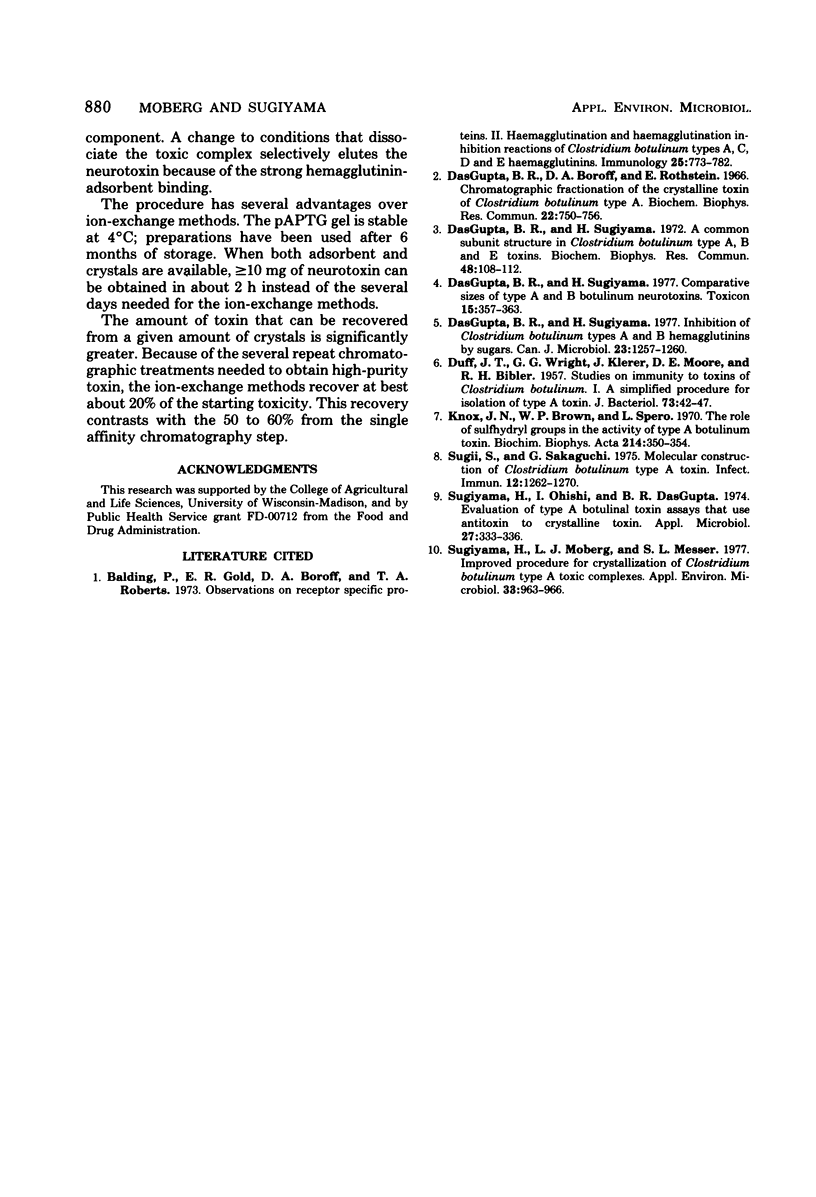Abstract
Type A botulinum neurotoxin was purified from toxic crystals by adsorption to p-aminophenyl-beta-D-thiogalactopyranoside coupled to CH-Sepharose 4B. At pH 6.3, the toxic complex was held by the binding between the ligand and the hemagglutinin of the complex; the toxin is eluted selectively by dissociating the complex with buffer-saline of pH 7.9. The single-step affinity chromatography recovered 50 to 60% of applied toxicity as preparations of greater than 99% purity.
Full text
PDF


Selected References
These references are in PubMed. This may not be the complete list of references from this article.
- Balding P., Gold E. R., Boroff D. A., Roberts T. A. Observations on receptor specific proteins. II. Haemagglutination and haemagglutination-inhibition reactions of Clostridium botulinum types A, C, D and E haemagglutinins. Immunology. 1973 Nov;25(5):773–782. [PMC free article] [PubMed] [Google Scholar]
- DUFF J. T., WRIGHT G. G., KLERER J., MOORE D. E., BIBLER R. H. Studies on immunity to toxins of Clostridium botulinum. I. A simplified procedure for isolation of type A toxin. J Bacteriol. 1957 Jan;73(1):42–47. doi: 10.1128/jb.73.1.42-47.1957. [DOI] [PMC free article] [PubMed] [Google Scholar]
- DasGupta B. R., Sugiyama H. A common subunit structure in Clostridium botulinum type A, B and E toxins. Biochem Biophys Res Commun. 1972 Jul 11;48(1):108–112. doi: 10.1016/0006-291x(72)90350-6. [DOI] [PubMed] [Google Scholar]
- DasGupta B. R., Sugiyama H. Comparative sizes of type A and B botulinum neurotoxins. Toxicon. 1977;15(4):357–363. doi: 10.1016/0041-0101(77)90019-8. [DOI] [PubMed] [Google Scholar]
- DasGupta B. R., Sugiyama H. Inhibition of Clostridium botulinum types A and B hemagglutinins by sugars. Can J Microbiol. 1977 Sep;23(9):1257–1260. doi: 10.1139/m77-188. [DOI] [PubMed] [Google Scholar]
- Dasgupta B. R., Boroff D. A., Rothstein E. Chromatographic fractionation of the crystalline toxin of Clostridium botulinum type A. Biochem Biophys Res Commun. 1966 Mar 22;22(6):750–756. doi: 10.1016/0006-291x(66)90212-9. [DOI] [PubMed] [Google Scholar]
- Knox J., Brown W. P., Spero L. The role of sulfhydryl groups in the activity of type A botulinum toxin. Biochim Biophys Acta. 1970 Aug 21;214(2):350–354. doi: 10.1016/0005-2795(70)90012-7. [DOI] [PubMed] [Google Scholar]
- Sugii S., Sakaguchi G. Molecular construction of Clostridium botulinum type A toxins. Infect Immun. 1975 Dec;12(6):1262–1270. doi: 10.1128/iai.12.6.1262-1270.1975. [DOI] [PMC free article] [PubMed] [Google Scholar]
- Sugiyama H., Moberg L. J., Messer S. L. Improved procedure for crystallization of Clostridium botulinum type A toxic complexes. Appl Environ Microbiol. 1977 Apr;33(4):963–966. doi: 10.1128/aem.33.4.963-966.1977. [DOI] [PMC free article] [PubMed] [Google Scholar]
- Sugiyama H., Oishi I., Dasgupta B. R. Evaluation of type A botulinal toxin assays that use antitoxin to crystalline toxin. Appl Microbiol. 1974 Feb;27(2):333–336. doi: 10.1128/am.27.2.333-336.1974. [DOI] [PMC free article] [PubMed] [Google Scholar]


